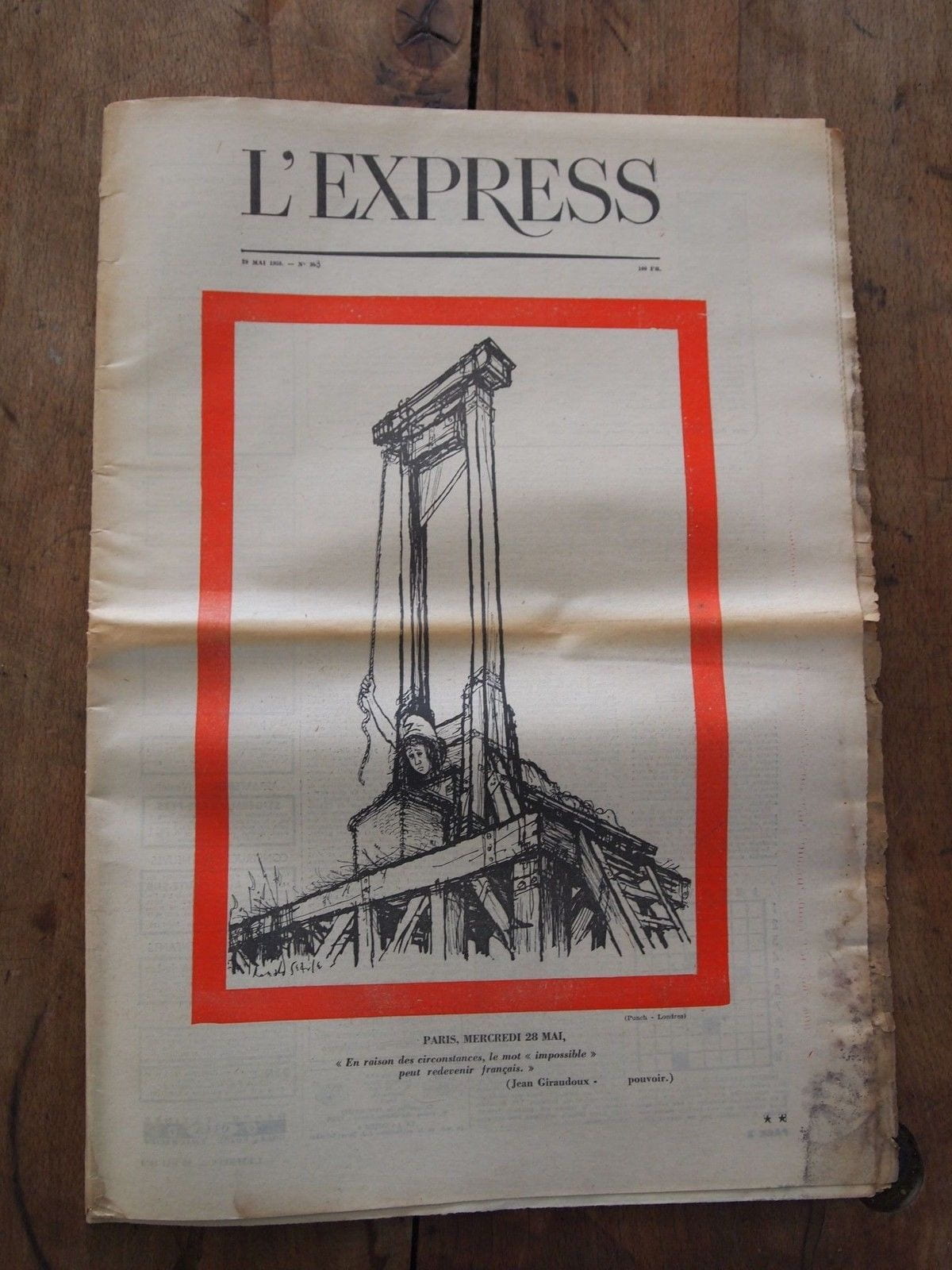by guest contributor Timothy Scott Johnson
You know, I’ve always been suspicious of analogies. But now I find myself at a great feast of analogies, a Coney Island, a Moscow May Day, a Jubilee Year of analogies, and I’m beginning to wonder if by any chance there isn’t a reason.
Umberto Eco, Foucault’s Pendulum (William Weaver, trans.)
Analogies abound in historical writing. Despite their near-ubiquity, however, I find historical analogies drastically under-examined in modern historical analysis. When examined, they usually emerge under the rubric of explaining why one historian’s analogical reasoning proves defective. But examining historical analogies used by our historical subjects can prompt us to ask larger, important questions.
The work done by Paul Ricoeur and Hayden White on historical tropes and metaphor, Reinhart Koselleck on concepts, and Hans Blumenberg on myth and metaphor all importantly contributed to the study of historical representation. None directly address analogies as such, however. At best, they treat analogy as a subset of metaphor, one in which the connecting logics are perhaps more clearly (or crudely) asserted than in mythic or metaphoric representation. Whereas myth and metaphor tend to be impressionistic with underlying logics pushed to the background, process and structure are foregrounded in historical analogy. Processes, narratives, and historicities embed themselves in historical analogies.
Analogies themselves are one of the key ways of thinking difference and similarity. Accordingly, we should not be all that surprised that the likes of Kant, Humboldt, and Droysen foreground the analogy’s role in rational judgment. And insights on analogy litter the first and concluding chapters of Gilles Deleuze’s Difference and Repetition. Even thinkers further afield like Fourier and Swedenborg were captivated by analogical reasoning. Without planting flags in any particular philosophical camp, it is not, I think, too controversial to recognize the importance of analogical thought in epistemology and aesthetics in general. To push even further, we could speculate with the linguist George Lakoff that analogies are a universal anthropological fact to be dealt with and not simply an anti-rational demon to be exorcized.
If analogies prove part of our human understanding, what then of historical understanding? For historians, analogies provide something akin to the efforts at modeling the so-called hard sciences developed after the Renaissance, making past reflections a sort of historical laboratory for contemporary and future reflection. Luciano Canfora’s brief study Analogia e storia offers some provisional insights into how historians have thought analogically. Dating as far back as Thucydides’ introduction to his History of the Peloponnesian War analogical thinking has been at the historian’s disposal for discerning shared processes and dynamics among different events. Plutarch’s Parallel Lives are perhaps an even clearer exemplar. Canfora’s colleague Carlo Ginzburg has also made the case that Aristotle’s discussion of paradigms in the Rhetoric is essential for understanding his view of history. Yet, at the same time, Canfora observes that large-scale similarities brought about by analogy also tend to obfuscate small-scale differences and represent history as tautological and self-referential. Thus, for instance, by definition every revolution risks being interpreted according to the French or Russian Revolutions. The political as well as historical pitfalls of such heuristics are many. Often, Canfora claims, these analogical oversimplifications can be productive in their own right; they can also be political expedients with little concern for historical understanding.
If the particular analogy of a given event to the French Revolution seems familiar—even well-worn, thanks perhaps to the legacy of Theda Skocpol’s comparative revolutions approach—the French Revolution has had other, more surprising, analogical applications. Often, these applications occurred by historical subjects themselves as a way of grounding their own historical situation. Even before French historian Albert Mathiez claimed the Bolsheviks were neo-Jacobins, for instance, Lenin adopted the mantle for himself. When grasped from the subject’s perspective, examining the historical analogies subjects use to describe and understand their own historical moments, the analogy actually has the power of getting beyond the pitfalls of the historian’s macrohistorical determinations. Rather than foreclosing analysis, they can point to analytic surprises.

Following De Gaulle’s return to government in May 1958, on the cover of the French magazine L’Express a Marianne, symbolic of the French Republic, is ready to guillotine herself.
Take, for instance, the French Revolution’s role in deciphering the French-Algerian War (1954-1962) and the fall of the fourth French Republic. Beyond an occasion to examine the important tensions between colonial difference, identity, and hybridity in postwar France and Algeria, the French Revolution analogy can also act as a diagnostic index uniting assumptions about French politics and history with assumptions about Algerian politics and history. That individuals on all sides of the war would refer to the French Revolution to mediate their own experience is both obvious—nationalism 101, so to speak—and illuminating. It highlights the various expectations actors had of the limits and possibilities of their moment. The historical analogy thus serves as a way into the microhistorical world. Taking subjects’ own large-scale assumptions about the unfolding of history as a starting point allows the historian to reconstruct their moment from within.
Let’s look at three specific instances of this analogy during the war. First is testimony from Jean-Claude Paupert, a veteran of the war in Algeria and subsequent member of pro-Algerian National Liberation Front (FLN) support networks. Despite declaring years later that he was no “revolutionary hothead,” Paupert was tried and found guilty of providing material aid and support to the FLN in 1960. In his closing trial declaration, Paupert explained his actions were meant to defend French civilization and French values, particularly those tied to the Revolution:
I have not chosen to help the Algerians because of their mistreatment, but because the struggle of the Algerian people is a just struggle, and I have not chosen to aid Algerian militants in spite of their terrorism, but because terrorism is their destiny.… Being French is not a virtue stored in a refrigerator, it is a fidelity one invents. To be French today is to be Algerian … We know well, for both princes and for valets, that fraternity is a terrorist act.
The Revolution’s Jacobin ideals of terror and fraternity were applicable in 1960 since Algeria was going through its own revolutionary moment that obeyed the same dynamics as the French Revolution. In this way, examining statements like this one and the many others like it from the war, we can build an understanding of what a nascent metropolitan third worldist engagement meant.
Next is a completely different sentiment, a message from General Jacques Massu, a rightwing supporter of French Algeria. By the end of the war he would help direct the Secrete Army Organization (OAS), a rightwing terrorist group bent on keeping settler control over Algeria. In May of 1958, however, he proved instrumental in bringing down the Fourth Republic and returning Charles de Gaulle to power. In a letter addressed to “Mon Cher Camarade,” dated 13 May 1958, the day of the Algiers generals’ putsch that would bring down the Republic, Massu wrote, “I must ask the best of yourself in order to combat the enemy and make the great ideas of generous France triumph in Algeria, these ideas that, since 1789, have shaken the world” (Bibliothèque de documentation internationale contemporaine, Fonds Daniel Guérin). Pro-colonial military action and the perpetuation of the civilizing mission were behind this instance of analogy to the French Revolution.
Lastly, analogy to the French Revolution emerged as popular among FLN supporters educated either in France or in state-run francophone North African schools. The poet, radio host, and FLN spokesman Jean El-Mouhoub Amrouche, criticized the ethnologist Germaine Tillion for failing to see Algerian nationalists as properly modern political subjects:
It is true that one can hardly recognize these hungry souls demanding the destiny of free men and being inhabited by spiritual needs. ‘Liberty or death’: it was good and true for the great ancestors of 1793 and the barefoot of Year II. Who could imagine the fellagha [rebels] of the Aurès, Oranie, Soummam, or the clandestine actors from the towns or villages of Algeria, have discovered in their desperation the only path towards the light by proclaiming themselves free and sovereign over the land of their forefathers?
Amrouche saw the legitimacy of the Algerian nationalist cause through the prism of the universal French ideals the civilizing mission encouraged him to embrace. Recognizing the FLN’s political legitimacy meant recognizing their affinities with Revolutionary actors.

Jean-Claude Paupert, center, was part of support networks that sheltered Algerians and laundered money for the FLN. (Image from Mediapart)
Simply observing these three different analogies to the French Revolution does not automatically reveal any obvious conclusions, except perhaps about the sheer elasticity of what the French Revolution could mean to different hereditary claimants. And the variety of events within the Revolutionary era of 1789 to 1799 allowed for a large degree of adaptation, highlighting on the one hand citizen military defense or on the other radical Jacobin universalism. But the analogy also works like an index of the type described by Charles Sanders Peirce’s semiotic theory, pointing in various directions to further research questions. Why, for instance, would Paupert and Amrouche think that Algerian history was at a moment similar to the end of old regime France? North African history had been denied by historians throughout the nineteenth and early parts of the twentieth centuries. Perhaps something had changed in perceptions of North African history (and indeed, much had changed). After all, the analogy is not present in earlier moments of anticolonial violence in North Africa. Further, why would a rightwing military officer feel the need to call upon the principles of 1789 when planning a government coup? What conditions would drive Massu to connect French Republicanism with a rather Bonapartist move (another historical analogy ever present in 1958 France)? Insofar as analogies reveal a subject’s assessments of the logics at work in a given moment, they grant a uniquely valuable point of entry for intellectual historians.
Timothy Scott Johnson recently defended his dissertation on the use of the French Revolution in the French-Algerian War at The Graduate Center, City University of New York. His research focuses on the intellectual history of postwar France.



2 Pingbacks